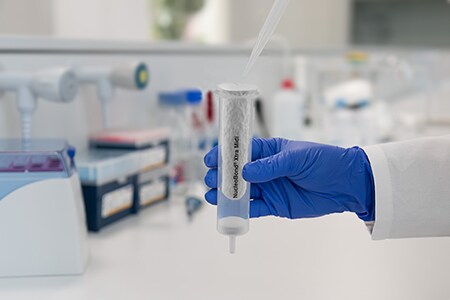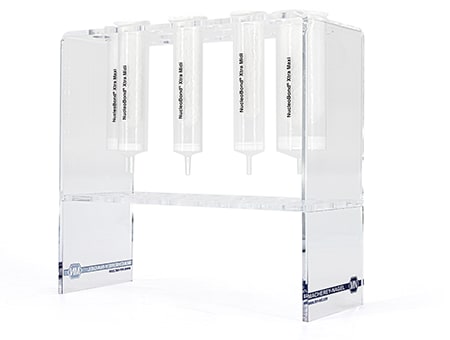Challenges of Plasmid DNA Used for Biopharma and Gene Therapy
Introduction
The demand for high-quality and ultrapure plasmid DNA has increased vastly in response to rapid advances in its use. New applications like mRNA-based vaccine development, antibody production, and gene therapy using viral vectors all require plasmid DNA as an important starting material. A particularly challenging aspect of these procedures is the presence of endotoxins, which are known to be frequent contaminants in plasmid DNA extracted from bacteria. While many typical downstream applications, such as sequencing and cloning, are not affected by the presence of these molecules, endotoxins are of great concern in biopharmaceutical and gene therapy applications.
What are the Biological Effects of Endotoxins?
Endotoxins are lipopolysaccharides located in the outer membrane of Gram-negative bacteria. In vivo endotoxins bind to receptors on the surface of immune cells and stimulate them to secrete pro-inflammatory cytokines (e.g. tumor necrosis factors and platelet-activating factors) and induce the production of inflammation mediators like interleukin (IL)-1 and IL-6. When endotoxin levels exceed the ability of the immune system it can overreact and induce an excessive immune response including a high fever and, in the worst case scenario, septic shock and death by organ failure. Lower endotoxin levels also cause numerous of biological effects including fever, altered resistance to bacterial infection, and leukopenia followed by leukocytosis.
The intensity of this immune response demonstrates the need for endotoxin-free plasmid DNA for gene therapy approaches. However, gene therapy is not the only downstream application affected by the presence of endotoxins in plasmid DNA. Endotoxins have also been described to have various effects on cell cultures, including increased cytotoxicity and altered cell growth, differentiation, and protein production. Sensitive cells respond strongly to even very low endotoxin concentrations in plasmid DNA, resulting in significantly reduced transfection efficiencies or false results in gene expression analyses. In general, the presence of endotoxins in plasmid DNA turns out to be a non-controllable variable, with reliable interpretation of data and reproducibility of results thus requiring their removal.
How to Pick the Right Product for Endotoxin Removal?
The level of endotoxin contamination found in plasmid DNA strongly depends on the purification method used. Although there is probably no such thing as complete absence of endotoxins, there is a general agreement to consider purified DNA (with values of less than 0.1EU/μg DNA) to be endotoxin-free (EF). The state-of-the-art technology used to achieve such high purities within a convenient plasmid purification system (starting with bacterial cells) is based on anion exchange chromatography and requires special patented buffer systems.
Why Choose Macherey-Nagel™ for These Plasmid DNA Applications?
Since the development of kit-based plasmid isolation more than 35 years ago, Macherey-Nagel™ has been a pioneer of fast and highly reliable solutions for the purification of plasmid DNA. Macherey-Nagel™ NucleoBond™ Xtra EF Kits combine an excellent anion exchange chromatography method with a fast and efficient buffer system for endotoxin removal. They exploit a proprietary technology that masks endotoxins and prevents them from binding to the anion exchange matrix. This procedure is highly effective and convenient, as the additives are provided in ready-to-use buffers and additional incubation steps are avoided. These NucleoBond™ EF kits yield endotoxin concentrations as low as 0.01–0.1EU/μg DNA, well below the EF-threshold. The resulting EF plasmid DNA is suitable even for challenging applications and provides the highest possible purity.


